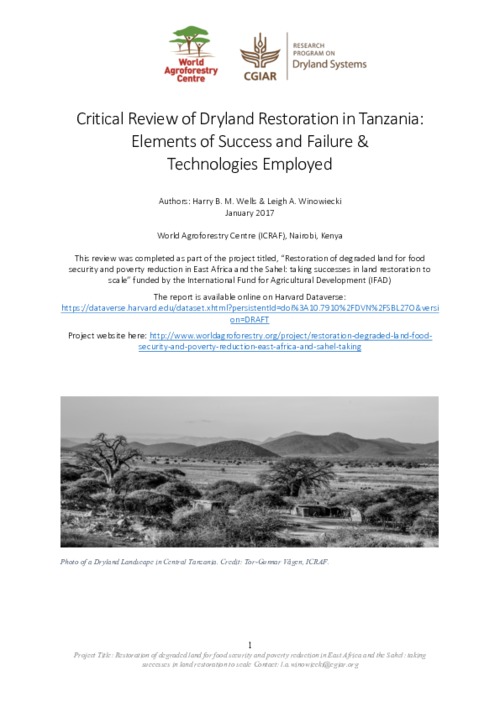Location
The International Center for Agricultural Research in the Dry Areas (ICARDA) was established in 1977. It is one of 15 such centers supported by the CGIAR. ICARDA’s founding mandate to promote agricultural development in the dry areas of developing countries remains highly relevant today.
ICARDA works with a tight focus on the problem-solving needs of resource-poor farmers, achieving this through the in-field delivery of its research outputs. Although global food production has increased by 20 per cent in the past decade, food insecurity and poverty remain widespread, while the natural resource base continues to decline.
International research centers such as ICARDA, which have helped drive previous improvements, continue to deliver new technologies to support sustainable growth in agriculture, and crucially, to work with a wide range of partners to accelerate the dissemination of these technologies.
ICARDA’s biggest strength is its staff – 600 highly skilled men and women from 32 countries. Our research and training activities cover crop improvement, water and land management, integrated crop-livestock-rangeland management, and climate change adaptation.
Other interventions include:
- Water harvesting - supplemental irrigation and water-saving irrigation techniques
- Conservation agriculture methods to reduce production costs and improve sustainability
- Diversification of production systems to high-value crops – horticulture, herbal and medicinal plants
- Integrated crop/rangeland/livestock production systems including non-traditional sources of livestock feed
- Empowerment of rural women – support and training for value-added products.
The ICARDA genebank holds over 135,000 accessions from over 110 countries: traditional varieties, improved germplasm, and a unique set of wild crop relatives. These include wheat, barley, oats and other cereals; food legumes such as faba bean, chickpea, lentil and field pea; forage crops, rangeland plants, and wild relatives of each of these species.
ICARDA’s research portfolio is part of a long-term strategic plan covering 2007 to 2016, focused on improving productivity, incomes and livelihoods among resource-poor households.
The strategy combines continuity with change – addressing current problems while expanding the focus to emerging challenges such as climate change and desertification.
We work closely with national agricultural research systems and government ministries. Over the years the Center has built a network of strong partnerships with national, regional and international institutions, universities, non-governmental organizations and ministries in the developing world and in industrialized countries with advanced research institutes.
THE ‘DRY AREAS’
Research and training activities cover the non-tropical dry areas globally, using West Asia, North Africa, Central Asia and the Caucasus as research platforms to develop, test, and scale-out new innovations and policy options.
Dry areas cover 41 per cent of the world’s land area and are home to one-third of the global population. About 16 per cent of this population lives in chronic poverty, particularly in marginal rainfed areas. The dry areas are challenged by rapid population growth, frequent droughts, high climatic variability, land degradation and desertification, and widespread poverty. The complex of relationships between these challenges has created a "Poverty Trap."
Members:
Resources
Displaying 151 - 155 of 431Adaptability and suitability of local cattle breeds in Egypt: Farmers and actors’ perceptions and practices of the cattle value chain
Egypt, where the mean temperature is expected to increase by 1−1.5°C over the next two decades, is particularly concerned with climate change in the Medi- terranean. Most of the research works on adaptive animal traits have focused on sheep and goats in non-irrigated areas, with little interest in livestock systems in irrigated areas. However, meat and dairy products in Egypt are mainly sup- plied by large ruminants − cattle and buffaloes.
The database of the PREDICTS (Projecting Responses of Ecological Diversity In Changing Terrestrial Systems) project
The PREDICTS project—Projecting Responses of Ecological Diversity In Changing Terrestrial Systems (www.predicts.org.uk)—has collated from published studies a large, reasonably representative database of comparable samples of biodiversity from multiple sites that differ in the nature or intensity of human impacts relating to land use. We have used this evidence base to develop global and regional statistical models of how local biodiversity responds to these measures.
Land degradation and the Sustainable Development Goals: Threats and potential remedies
The concern for the well-being of land is often directly related to one’s proximity to the land, be it physically, economically or culturally. Land is more precious if one’s livelihood depend on it immediately than if one is merely a visitor. Land is valued differently if it is the base of one’s power or wealth than if one’s community is in need of its integrity and depends on the ecosystem services (ESS) that it provides. To some extent, this may explain the great challenge UNCCD has experienced in mustering international support for its mandate.
Critical Review of Dryland Restoration in Tanzania: Elements of Success and Failure & Technologies Employed
Arid, semi-arid and dry sub-humid areas cover 61 % of Tanzania (United Republic of Tanzania, 1999) and, over the past decades, several restoration projects have worked toward reversing degradation in these areas (Kikula, 1999; Kisanga et al., 1999). These projects have addressed from social and ecological perspectives and have spanned for decades, thereby allowing for a genuine opportunity to identify and articulate lessons learned and develop good practice guidelines for restoring productive capacity of drylands.
Crop ontology: integration of standard variables
The Crop Ontology (CO, http://www.cropontology.org/) is a resource of the Integrated Breeding Platform (IBP, http://integratedbreeding.net/) providing breeders with crop specific terms for fieldbook edition and data annotation. Until Mai 2015, a plant phenotype was annotated with 3 CO identifiers for the trait, the method and the scale, respectively. Yet, breeders’ fieldbook and most phenotypic databases are designed to annotate a datapoint with only one identifier.






